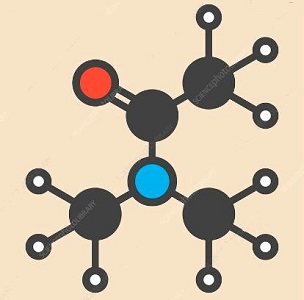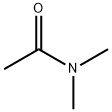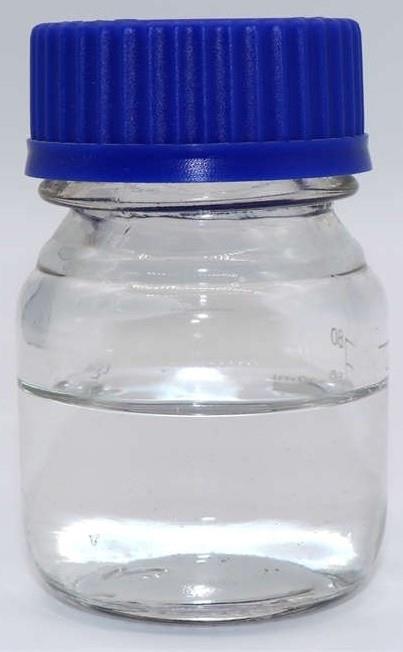What is N,N-Dimethylacetamide?
General Description
N,N-Dimethylacetamide is a highly polar aprotic solvent, micro ammonia odor, very strong dissolving power, soluble wide, miscible with water, aromatics, esters, ketones, alcohols, ether, benzene and chloroform and other arbitrary and enable activation of molecular compounds. N,N-Dimethylacetamide is a member of the class of acetamides that is acetamide in which the hydrogens attached to the N atom have been replaced by two methyl groups respectively. Metabolite observed in cancer metabolism.
It is widely used as a solvent and a catalyst. The solvent, with high boiling point, flash point, thermal stability and chemical stability of the solvent, is used for polyacrylonitrile spinning solvent, synthetic resin and natural resins, formic acid vinyl ester resin, vinyl pyridine copolymer and aromatic carboxylic acid. The catalyst can be used in the process of urea heating to produce the reaction of cyanide, sodium halide and metal cyanide to produce the reaction of alkyl acetylene, organic halide and isocyanate. N,N-dimethylacetamide also can be used as electrolytic solvent and photography with coupler solvent, de paint agent, organic synthesis of raw materials, pesticide and pharmaceutical raw materials. Separation of styrene from C8 fraction, extraction, distillation, solvent, etc.
Chemical Properties
Transparent colorless liquid. The organic solvent can be mixed with any water, alcohol, ether, ester, benzene, chloroform, and aromatic compounds.
Uses
N,N-Dimethylacetamide (DMAC) is mainly used as synthetic fibers (acrylonitrile) and polyurethane spinning synthetic polyamide resin and a solvent, but also it is used for separating styrene from the C8 fraction extractive distillation solvent, and it is widely used in the aspects of polymer films, coatings and medicine. Currently it is used to synthesize a large number of antibiotics and pesticides in the pharmaceutical and pesticide. The catalyst can also be used for the reaction, electrolytic solvent, paint scavengers and various crystalline solvent adducts and complexes.
Used as the reaction solvent of pharmaceutical synthesis, synthetic fiber spinning solvents and synthetic resins, photographic chemicals chromogenic agent solvents, paints and other solvents, catalyst.
Dimethylacetamide is commonly associated with many industrial uses, either as a starting material or an intermediate. DMAC is a good solvent that is used in polymer dissolution, especially in the fiber industry.
This organic compound is a solvent for many organic reactions and in industrial applications. dimethylacetamide is an important industrial solvent for polyacrylonitrile, vinyl resins, cellulose derivatives, styrene polymers and linear polyesters.
Pharmaceutical Applications
Dimethylacetamide is used as a solvent in oral and injectable pharmaceutical formulations. It has been used as a cosolvent to solubilize poorly soluble drugs. The use of dimethylacetamide has also been investigated as a vehicle for the parenteral delivery of relatively small peptides.
The use of solvents such as dimethylacetamide has been shown to influence the size and rate of release of norfloxacin from nanoparticles.
Dimethylacetamide has also been used in topical formulations and has been evaluated as a permeation enhancer for transdermal drug delivery.
Toxicity Study
A study of 41 workers who had been exposed to dimethylacetamide from 2 to 10 years revealed the occurrence of disorders reflecting liver damage (Corsi, 1971). Retention of bromosulfophthalein was increased in 9 of 10 workers who had been exposed to dimethylacetamide for 7 to 10 years, and in 10 of 20 workers who had been exposed to dimethylacetamide for 2 to 7 years. Other parameters of hepatic function which were altered in the exposed individuals include proteinemia, cholesterolemia, activities of hepatic transaminases and alkaline phosphatase in serum, and bilirubinemia. Hepatomegaly was diagnosed in 14 workers.
In a clinical trial, dimethylacetamide was administered to patients with advanced malignancies and caused abnormal mental states (Weiss et al 1962a, b). This effect was observed at a dose of 400 mg/kg given daily for 3 or more days.
The symptoms were not seen at 300 mg/kg or lower. The second or third dose caused depression, lethargy, occasional confusion or disorientation. The fourth or fifth dose produced striking hallucinations, perceptual distortions and delusions in all nine patients. All patients reverted to normal several days after discontinuation of treatment with dimethylacetamide.
Occupational Exposure
Multiple case reports have documented DMAC-associated hepatotoxicity, mainly in synthetic fiber workers. Acute DMAC poisoning is primarily manifested as neuropsychiatric illness, including psychosis, delirium, and seizures, and as systemic disease, including acute hepatitis. The primary route of exposure appears to be dermal absorption of DMAC vapor. Subclinical ALT elevations appear to occur not infrequently in new synthetic fiber workers (within the first 7 months of employment) in a dose-dependent fashion.89,90 The elevation in ALT improved by 50% within 30 days in 90% of persons after DMAC exposure was halted.89 Interestingly, transaminitis appears to occur much less frequently, if at all, in workers exposed longer than 7 months, thus suggesting adaptation to chronic exposure.89-91 However, animal models have documented liver injury following both acute and chronic DMF exposure.
Safety Profile
Moderately toxic by skin contact, inhalation, intravenous, and intraperitoneal routes. Mildly toxic by ingestion. Experimental teratogenic and reproductive effects. A skin and eye irritant. Less toxic than dimethylformamide. Mutation data reported. Combustible when exposed to heat and flame. A moderate explosion hazard. Violent reaction with halogenated compounds (e.g., carbon tetrachloride, hexachlorocyclohexane) when heated above 9OOC. Iron powder catalyzes the reaction so that it initiates at 71C. When heated to decomposition it emits toxic fumes of NOx.
Carcinogenicity
DMAC was not carcinogenic in rats administered 100, 300, or 1000 mg/kg/day in drinking water for 2 years. Rats and mice were exposed by inhalation to 0, 25, 100, or 350 ppm DMAC for 6 h/day, 5 days/week for 18 months (mice) or 2 years (rats). DMAC was not oncogenic under these conditions in either the rat or the mouse.
You may like
Related articles And Qustion
See also
Lastest Price from N,N-Dimethylacetamide manufacturers

US $5.00/box2025-09-28
- CAS:
- 127-19-5
- Min. Order:
- 1box
- Purity:
- 99%
- Supply Ability:
- 20KLper month

US $5.00-2.00/KG2025-05-28
- CAS:
- 127-19-5
- Min. Order:
- 1KG
- Purity:
- 99%
- Supply Ability:
- 10000kg





